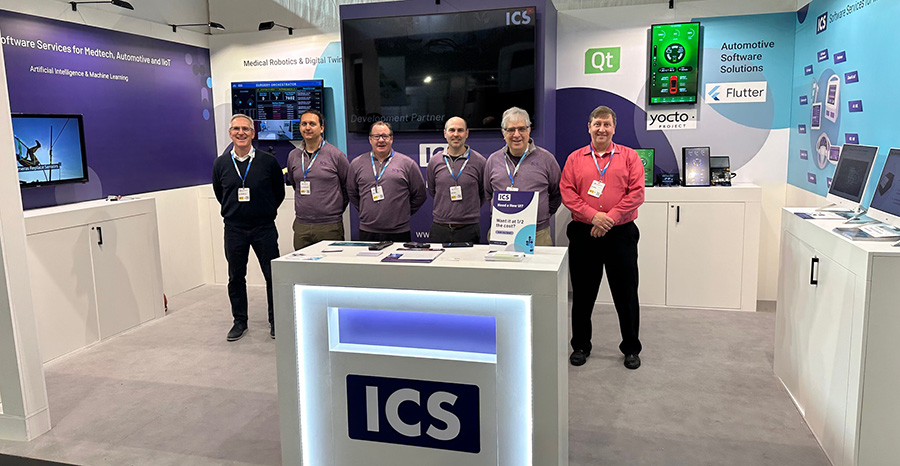
Key Takeaways from 2024 Embedded World
Increased complexity.
That’s the overarching takeaway from the 2024 Embedded World Exhibition & Conference, held April 9-11 in Nuremberg, Germany. Embedded World brings together the global embedded community – last year more than 950 exhibitors and 27,000 visitors participated – and provides a unique view of the latest technologies, trends and challenges impacting this versatile industry.
“With the growing prominence of the industrial internet of things (IIoT), we’re no longer talking just about devices, but rather systems of devices,” said Integrated Computer Solutions (ICS) CEO Peter Winston, who attended this year’s show. “Embedded World showcased everything from complicated device ecosystems to widespread integration of AI, for instance. The message was clear: this move toward greater complexity will significantly impact every stage of the software development process.”
(Read Winston’s take on complexity – how devices and systems are growing more complex, and what this means for developers and product owners – in his blog 6 Embedded Software Development Trends to Watch in 2024.)
In addition to Winston, key members of ICS’ management and engineering teams participated in this year’s show, presenting some of the interesting work we’ve done of late. “Our booth was packed with demos – some really intriguing stuff,” said ICS Vice President of Engineering Jay Noble. “We showcased applications for AI and machine vision, as well as presented a new in-vehicle infotainment (IVI) system in both Flutter and Qt. We also had a medical robotics demo featuring digital twin technology, and content around medical device development and cybersecurity.”

And so it begins: Conference attendees visit ICS’ booth early on Day 1

The ICS team
The Future of Embedded Software Development
Beyond speaking with scores of visitors’ to ICS’ booth, our team took time to explore the show to take the pulse of the embedded industry. “One of the takeaways for me was the expanding number of options in terms of UX,” Winston said. “The Qt Group continues to be a frontrunner, but many options are available, among them Slint, GL Studio and Crank. And of course, Flutter is having a moment, especially in the automotive industry now that Toyota is using it and contributing code. This wealth of choices around UX offers developers and product owners much more flexibility than in the past, which can only accelerate innovation.”
Speaking of Flutter, ICS designed and developed a fresh UX/UI for Automotive Grade Linux’s (AGL) IVI demo, which was showcased in both the ICS and AGL booths. Featuring a modern look and feel, and intuitive navigation, ICS’ elevated AGL demo includes working integrations for key screens, including Home, HVAC, Media Player, Settings and Apps.
“We see the vast potential of Flutter, especially in the auto industry, but we feel it’s appropriate for specific use cases, not for every project,” Noble said. “That’s why we took the unique step of writing and presenting the demo’s front end in both Flutter and Qt. By doing so, we showed product owners they have options to suit their particular situations, and we demonstrated AGL’s flexibility when it comes to user interface toolkits.”

ICS developed a fresh UX/UI for Automotive Grade Linux’s (AGL) in-vehicle infotainment system demo in both Flutter (blue) and Qt (green), demonstrating AGL’s flexibility when it comes to user interface toolkits.
Beyond the trend toward increasing complexity and the expanding spectrum of options for creating exceptional user experiences, another key takeaway centered around cybersecurity. “After speaking to countless people here at Embedded World, it’s apparent that nearly everyone is now really starting to think more deeply about hardening cybersecurity to mitigate what, from all accounts, is escalating risk,” Winston said. “Certainly new FDA regulations have prioritized cybersecurity in medical device development – but this laser-like focus on cybersecurity is also expanding across myriad industries beyond medical, a trend I expect to continue. Whatever the industry, incorporating greater device and device ecosystem cybersecurity will dramatically increase development effort on every project. In turn, it’s possible this could trigger a move away from Yocto to platforms like Windows IOT or BlackBerry QNX. Time will tell.”
When asked what surprised him most about the show, Winston pointed to AI/ML. “I was surprised that AI/machine learning sort of took a back seat,” he said. “In fact, the whole category was for me a bit of a letdown. Sure, there were plenty of chips, plenty of demos incorporating the technologies – but I was anticipating much fanfare with groundbreaking ideas around every corner. Instead, I was met with iterations of existing ideas and use cases that I was already aware of. Granted, the show featured nearly 1,000 exhibitors and I certainly didn’t have time to visit them all so it’s possible I missed something phenomenal."
If you were there and saw something compelling, reach out and tell us about it!
Embedded World Comes to the U.S.
“Over the course of three days, our team spoke with hundreds of attendees and fellow exhibitors, all eager to do their part to move embedded development to the next level,” said ICS Vice President of Sales Dan McGillivray. “I was pleased with the high level of engagement – proof that the embedded space continues to be vibrant and dynamic.”
If you’re involved in embedded development in the U.S. don’t miss Embedded World in Austin, Texas this October – the first time this seminal conference and exhibition will be held outside of Germany. Of course, ICS will be there! We invite you to stop by our booth to explore our demos in person, and talk to us about your product development goals.